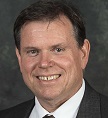How to integrate evidence into your practice
A blog post written by Dr David Healey, General Practitioner, Faulkner Street Medical Practice
When I look back on my career as a General Practitioner (I am coming up to 30 years as a GP), I am amazed at how things have changed in a relatively short space of time. I’m not talking just about technological changes. I’m also talking about how we communicate with our patients, and the content of that communication. In other words, how we say things, and what we say.
Many aspects of our clinical practice are nowadays subject to research and being reviewed. New knowledge is being added continuously. So, how do I learn to adopt this new knowledge for my patients?
Firstly, I need to be receptive to new knowledge. I need to be comfortable acknowledging that advice that I may have given previously may not have been the best advice after all. I know that some clinicians could find this threatening, but I think that you owe it to your patients to always reflect on your practice, and strive to be up to date.
Secondly, I need to seek out this new knowledge. This can come from several sources: journals and magazines, your colleagues, conferences, and professional websites such as CareSearch, palliAGED and ELDAC. I need to read, and continue to read.
Lastly, I need to be willing to try out this new evidence. I’ll discuss it with my colleagues (“Hey, this is interesting what this article says about…”) and I’ll discuss it with my patients (“Research is now suggesting that…”). With my patients, it is always a 2-way dialogue. I respect the choices that they make. But I always try to nudge them in the direction that the evidence suggests.
Let me give 2 examples to illustrate these points.
The first example relates to how we communicate with our palliative patients. In 2007, Josephine Clayton and her colleagues published guidelines for communicating with patients at the end of life. These guidelines were based on strong evidence, and clearly showed that patients and their families want the truth, want honesty, want empathy, and want to be a part of any decision-making process. They showed that giving patients this full information made them and their families better prepared for the challenges that lay ahead. It put to rest the notion that clinicians should shield patients so as not to take away their hope. Patients will pick up on attempts to talk around the subject, and in doing so, will lose trust with their clinicians.
When I first read this article, I thought, “Wow, this will be challenging. This will be hard.” But the evidence was clear, and so I began to be more forthcoming with my patients. It is hard, at first, but becomes easier. It becomes easier because patients are grateful for the information, and they become more relaxed, and so I become more relaxed. Patients are not stupid, and when they know that you are being straight with them, it becomes easier to open up all lines of communication.
The second example relates to how we manage our frail older adults. In particular, how we often burden them with too many medications. In 2015, Ian Scott and his colleagues published a paper on the process of deprescribing. Essentially, frailer older people become more sensitive to the adverse effects of medications. If a person is taking more than 5 medications, they are at higher risk of falls and of dying, then someone taking less than 5 medications. The risk of adverse events becomes higher with the more medication taken. Evidence shows that it is safe to stop medication taken to prevent disease in these frailer patients. Things like blood pressure tablets and cholesterol medication. It is better to focus on easing symptoms, such as pain.
This article has led me to cease a lot of my Nursing Home patients’ medications. I have found that patients and their families like this approach, as they often feel that “mum is taking too many pills”. Staff like it as it lessens the pill round. And, as the evidence suggested, there have not been any adverse effects for the patients.
I try to integrate new evidence now into my daily practice. I hope that this blog has shown how this can be done. It may seem hard, but don’t be daunted. I have found that introducing new information is beneficial not just for the patients, but for myself.
References
- Clayton JM, Hancock KM, Butow PN, Tattersall MH, Currow DC; Australian and new Zealand Expert Advisory Group, et al. Clinical practice guidelines for communicating 2 prognosis and end-of-life issues with adults in the advanced stages of a life-limiting illness, and their caregivers. Med J Aust. 2007 Jun 18;186(S12):S77-S105.
- Scott IA, Hilmer SN, Reeve E, Potter K, Le Couteur D, Rigby D, et al. Reducing inappropriate polypharmacy: the process of deprescribing. JAMA Intern Med. 2015 May;175(5):827-34. doi: 10.1001/jamainternmed.2015.0324.

Dr David Healey, General Practitioner, Faulkner Street Medical Practice
For information to support GPs providing palliative care visit the GPs section and for the latest palliative care evidence visit the Clinical Evidence and Patient Management section in CareSearch.